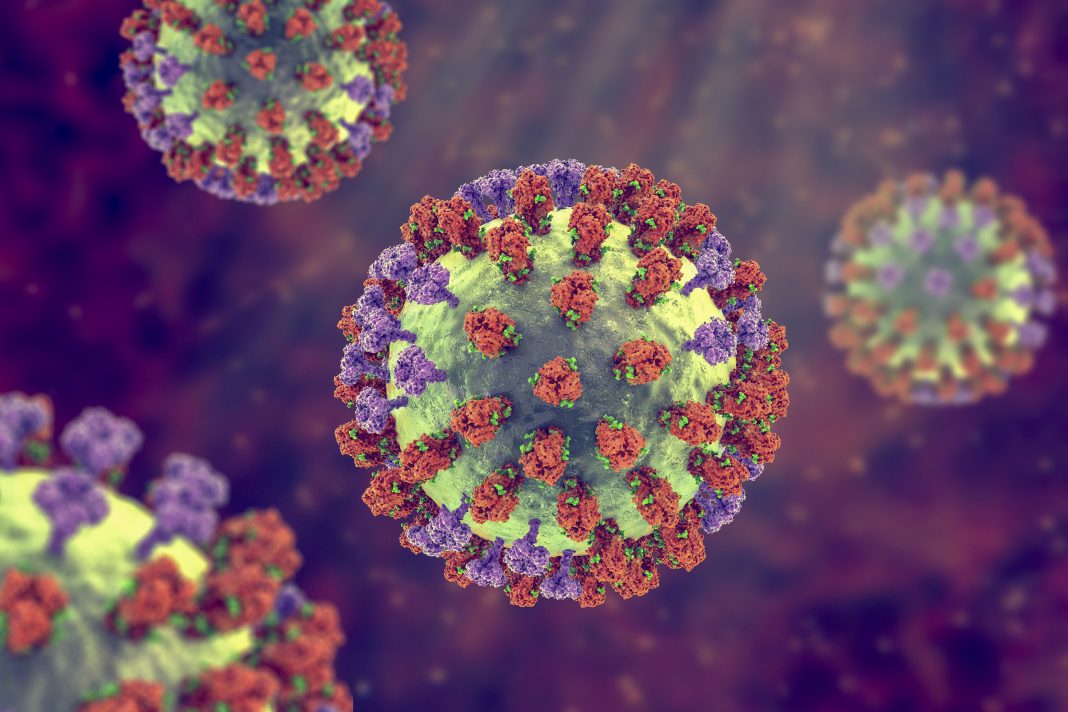Researchers headed by a team at the University of Pittsburgh School of Medicine Center for Vaccine Research have identified a previously unrecognized class of antibodies that appears capable of neutralizing multiple forms of both H1 and H3 influenza virus strains. The findings, which could contribute to the development of more broadly protective flu vaccines, are reported in PLOS Biology by first author Holly Simmons, PhD, and colleagues, in a paper titled “A new class of antibodies that overcomes a steric barrier to cross-group neutralization of influenza viruses.”
A flu vaccine prompts the immune system to make antibodies that can bind to a viral protein called hemagglutinin (HA) on the outside of an invading flu virus, blocking it from entering a person’s cells. Different antibodies bind to different parts of hemagglutinin in different ways, and hemagglutinin itself evolves over time, resulting in the emergence of new flu strains that can evade old antibodies. As the team explained, “Immunity to influenza viruses is limited by large antigenic divisions between the 18 influenza A HA serotypes …”
New flu vaccines are offered each year based on predictions of whatever the most dominant strains will be. Extensive research efforts are paving the way to development of flu vaccines that are better at protecting against multiple strains at once. Many scientists are focused on antibodies that can simultaneously protect against flu subtypes known as H1 and H3, which come in multiple strains and are responsible for widespread infection.
Simmons and colleagues homed in on a particular challenge in this endeavor—a small change found in some H1 strains in the sequence of building blocks that makes up hemagglutinin. Certain antibodies capable of neutralizing H3 can also neutralize H1, but not if its hemagglutinin has this change, known as the 133a insertion. “Many potent antibodies with broad, intra-subtype specificity bind HA at the receptor binding site (RBS),” the team continued. “One barrier to broad H1-H3 cross-subtype neutralization is an insertion (133a) between positions 133 and 134 on the rim of the H1 HA RBS.”
![Humans mount convergent H1N1-H3N2 neutralizing antibody responses to influenza virus. Panels are derived from structures reported by Simmons et al., (PDB 7TRH, 7RRI and 3UBE by Xu et al., for the model of receptor engagement). [Kevin McCarthy (CC-BY 4.0, https://creativecommons.org/licenses/by/4.0/)]](https://www.genengnews.com/wp-content/uploads/2023/12/Fridayimage-300x202.jpeg)
The authors added, “We need annual influenza virus vaccines to keep pace with continuing viral evolution. Our work suggests that the barriers to eliciting more broadly protective immunity may be surprisingly low. Given the right series of influenza virus exposures/vaccinations, it is possible to for humans to mount robust antibody responses that neutralize divergent H1N1 and H3N2 viruses, opening new avenues to design improved vaccines.”
The authors further concluded, “These data suggest that an H3-specific B cell can evolve somatically, upon exposure to H1by infection or vaccination, to recognize an H1 HA and that the H1 adaptation need not depend on the presence or absence of a K133a insertion.” The study expands the list of antibodies that could potentially contribute to development of a flu virus vaccine that achieves broader protection through an assortment of molecular mechanisms. It also adds to growing evidence supporting a move away from flu vaccines grown in chicken eggs—currently the most common manufacturing approach.


